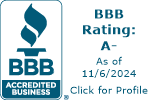
Communication strategy development
Effective communication is the backbone of any successful business. Our communication strategy development services can help your organization build a clear and consistent messaging plan that will resonate with your target audience and drive results.
Our Strategy
An effective organizational communication strategy is crucial for fostering transparency, alignment, collaboration, and engagement within an organization. Following is an outline from Service Edge Consulting illustrating an effective approach to developing and implementing such a strategy:
1. Clear Objectives and Goals:
- Define clear objectives for your communication strategy. What do you aim to achieve? Examples could include improving employee engagement, aligning teams with organizational goals, enhancing internal collaboration, or fostering a culture of innovation.
- Ensure that these objectives are aligned with the broader strategic goals of the organization.
2. Audience Analysis:
- Understand your audience. Different groups within the organization may have unique communication needs, preferences, and priorities.
- Segment your audience based on factors such as role, department, location, seniority, and communication preferences.
3. Channels and Tools:
- Select appropriate communication channels and tools based on the needs and preferences of your audience. This could include email, intranet portals, instant messaging platforms, video conferencing, social media, newsletters, and face-to-face meetings.
- Consider using a mix of formal and informal channels to reach different segments of your audience effectively
4. Consistent Messaging:
- Ensure consistency in messaging across all communication channels and touchpoints.
- Align communication with the organization's values, mission, and brand identity.
- Provide regular updates on key initiatives, milestones, and performance metrics to keep employees informed and engaged.
5. Two-Way Communication:
- Encourage open, transparent, and two-way communication within the organization.
- Create opportunities for employees to provide feedback, ask questions, and share ideas.
- Actively listen to employee concerns and address them in a timely and empathetic manner.
6. Leadership Communication:
- Leaders play a crucial role in driving effective communication within the organization.
- Ensure that leaders at all levels are visible, approachable, and accessible to employees.
- Provide leaders with training and support to enhance their communication skills, particularly during times of change or crisis.
7. Training and Development:
- Offer training programs to employees on effective communication skills, including active listening, conflict resolution, giving and receiving feedback, and delivering presentations.
- Foster a culture of continuous learning and improvement around communication practices.
8. Measurement and Feedback:
- Establish metrics to evaluate the effectiveness of your communication strategy, such as employee engagement surveys, feedback mechanisms, and communication analytics.
- Use these insights to identify areas for improvement and refine your communication approach over time.
9. Adaptability and Flexibility:
- Be willing to adapt your communication strategy based on changing organizational needs, technological advancements, and feedback from stakeholders.
- Stay agile and responsive to emerging challenges and opportunities.
10. Celebrating Success and Recognition:
- Acknowledge and celebrate achievements, milestones, and contributions within the organization.
- Recognize employees for their efforts and achievements publicly, reinforcing positive behavior and fostering a culture of appreciation.
By following these steps and continually refining your approach based on feedback and insights, we will help you develop and implement an effective organizational communication strategy that drives success and enhances employee satisfaction and engagement.

